A nicely edited 4 minute video of an 11-day crossing of Mongolia during the Mongol Rally, by Jeff Diehl of www.SpotsUnknown.com.
Copyright © 2012 James Langan

Trucks, Tech, Reviews, ADV Travel
A nicely edited 4 minute video of an 11-day crossing of Mongolia during the Mongol Rally, by Jeff Diehl of www.SpotsUnknown.com.
Copyright © 2012 James Langan
Wheel Shopping
I’m not a big custom wheel fan, partly because I’ve never run very wide tires so narrower OE wheels work well, and partly because wheel bling is not my thing. I’ve purchased exactly two sets of custom wheels in all my years of tinkering with four-wheel-drives, one set for my old F350, and one set for my 4Runner—both were later sold after very little use. There may be another set in the F350’s future if I stay with 285s, but that’s down the road.
However, I have purchased many sets of original equipment wheels—either take-offs or new—including an extra set of steelies for the F350, several 16-inch Toyota FJ Cruiser TRD wheels for the Mall Crawler, and now a couple sets of forged 17-inch TRD take-offs for the 2nd Gen. Tundra. Extra wheels are needed for tire testing, not because I have a wheel fetish, tires on the other hand…
It’s much easier to find take-off wheels for new or current platforms, when enthusiasts are removing OE tires and wheels and replacing them for appearance or something bigger. For example, it’s very difficult to find a nice set of 16×7-inch factory forged aluminum wheels for the 1996 F350. Few are modifying these trucks that ceased production in 1997, and the supply of OE wheels dried-up long ago. Ford changed the bolt pattern on the heavy-duty 1999 F-series, so newer OE wheels don’t fit.

Six Spoke 17-inch 4Runner Sport Wheels
In the case of the 4th Generation Toyota 4Runner which ceased production just a few years ago, OE take-off wheels are not terribly difficult to find, but finding the exact style I wanted for a reasonable price was a bit of a challenge. The 4th Gen. 120 platform 4Runners were sold with 16, 17, and 18-inch wheels, and in a few different styles.
It should be clear from my Wheels, Tires and Sidewalls post last month that I prefer more tire and less wheel. But I wanted to procure a set of seventeens so I could eventually mount some of the 285/70R17 tires I’m amassing for the Tundra, onto the 4Runner. I was specifically looking for the earlier 6-spoke, 17-inch Sport wheels, not the later, 5-spoke design which is more common and the same or very similar to the 17-inch Tacoma wheels. These seventeens are 7.5-inches wide, just wide enough for 285 tires.
The 6-spoke seventeens are just old and uncommon enough that there are fewer offerings, and the prices are higher than other 4th Gen. take-offs. When it comes to shopping for used wheels Craigslist is a blessing (or is it a curse). I missed a local set for $250 a few months ago, and while I continued to search nationwide, I didn’t want to pay for shipping. After months of intermittent shopping, I found a set in Oregon that did not sell for the original asking price of $400.00. A potential buyer looked at the wheels but passed due to scuffs. The listing expired, but I stayed in contact with the seller, as a planned trip to Eugene, Oregon, was going to put us within 100-miles of the rims. Without seeing a good picture of the damaged wheels I made a tentative offer of $300, which was accepted, and weeks passed.
It was a two hour drive to meet the seller, but even at $4.00 per gallon for diesel, the cost to pickup the wheels was small. Driving the little VW TDI hatchback about 70 miles-per-hour the round trip fuel economy was 48.66 MPG.


We met the seller and inspected the wheels, which did have a few typical gouges near the rims from normal use. The one with the most damage appears as if it was mounted on the wrong tire machine, with a circular gouge near the center of the wheel. I would prefer no such marks, but I use my four-wheel-drives in the rocks and dirt, so there’s a good chance I’ll further damage these wheels during off-highway travel. I do not need, nor am I will to pay for new or perfect wheels. I offered him $250, he countered with $275 and I agreed.
Now what tires should I mount?
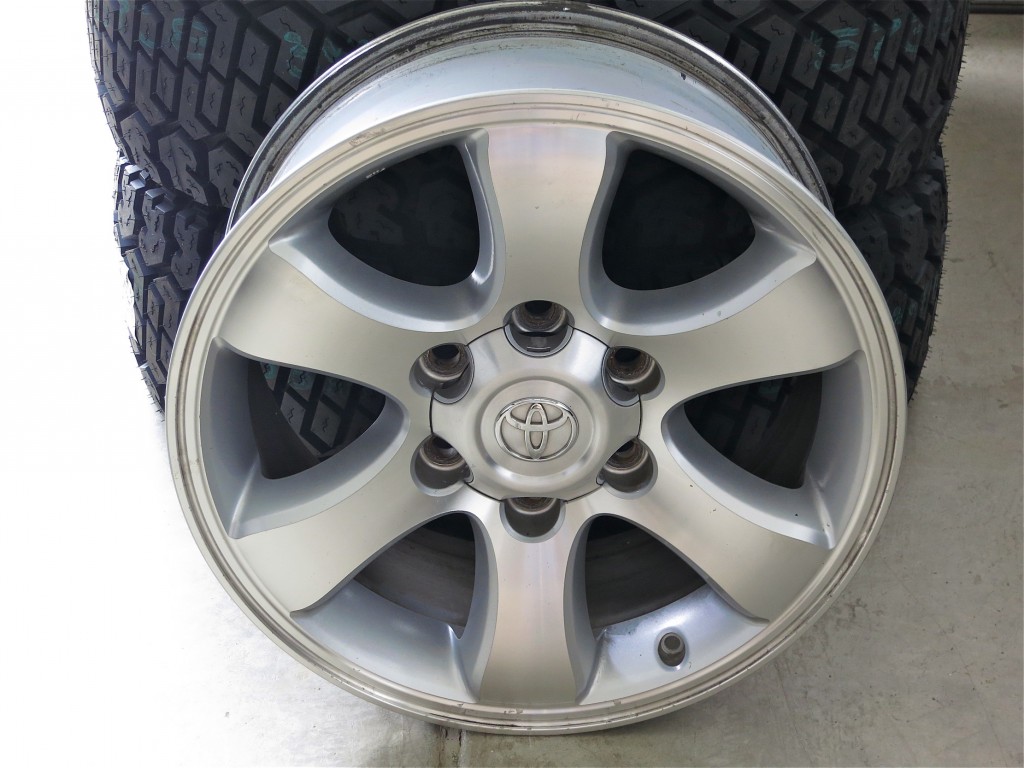
RoadTraveler–Rollin’ Forward
Copyright © 2012 James Langan
My recent post about attaining 56 MPG in our little VW TDI was a rare achievement, our normal fuel economy is less, but still quite good. A recent road trip to Oregon is more representative of our typical highway fuel economy. The trip consisted of a couple hundred miles of slower, two-lane highways through the Sierra Nevada and Cascade mountain ranges, then a couple hundred more on the faster I5 freeway. There were few ‘other’ miles mixed in, about thirty. All on one tank of fuel, as traveling 500-600 highway miles on a tank is no challenge for the little 1.9L TDI.
Over 500.3 miles we used 10.5 gallons of diesel, for 47.64 MPG. The pump clicked off a hair under 10.2 gallons, 49 MPG, too high, having made the same trip a few times. We’ll take 47.
We traveled mostly 65-75 mph, with lots of cruise control use.
The quotes and links below tell the story well, but let me say that I still love printed, paper maps. We are all using computers right now, and they can be fun, terrific tools. And who would have imagined a GPS in a cell phone just ten years ago?
However, when I’m traveling in the backcountry I still primarily rely on my good sense of direction, traveling during daylight so I can see where I’m going, and paper maps. Paper doesn’t crash or need batteries, it just works.
I will buy one of these great maps, frame it, and put it in my shop, and another to use.
Created by one man in Oregon!
Imus Geographics, the creator’s site.
“This object—painstakingly sculpted by a lone, impractical fellow—is a triumph of indie over corporate. Of analog over digital. Of quirk and caprice over templates and algorithms. It is delightful to look at. Edifying to study. And it may be the last important paper map ever to depict our country.” Seth Stevenson, Slate.com Jan 2, 2012
The BEST paper map of the USA story
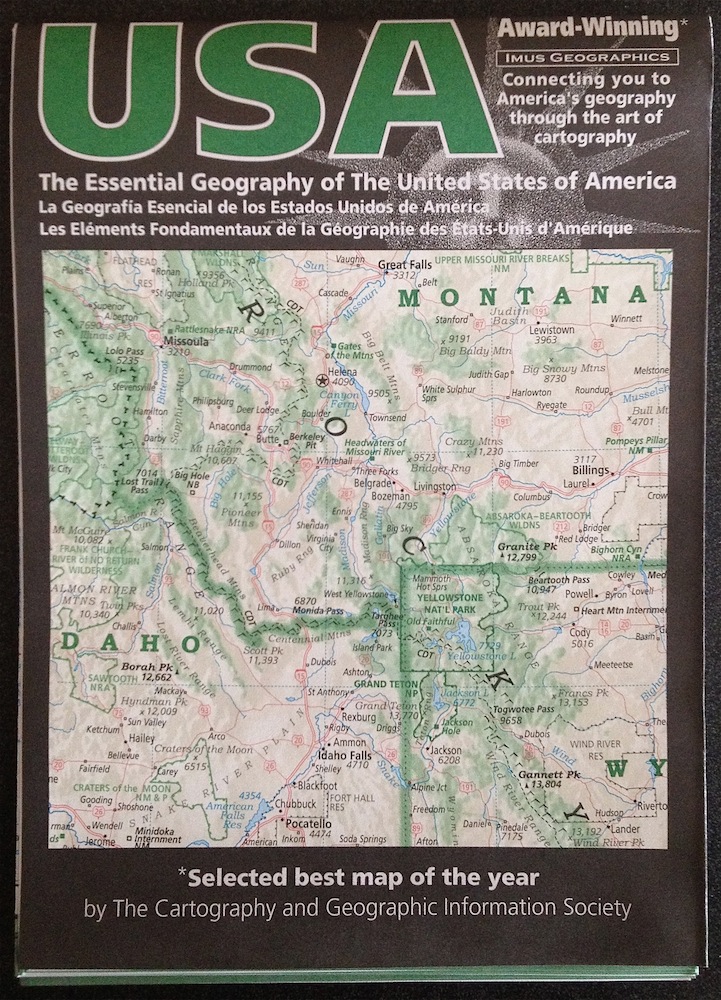
Copyright © 2012 James Langan
I’ve been bent on Made-in-USA for the past several weeks. It’s not that I don’t or won’t buy things made elsewhere, it’s almost impossible not to. But when there is a choice, sometimes it’s simply a matter of paying attention to the labeling and choosing one product over another. Sometimes you will pay more for American made, but not always.
Recently I went to a local tool store because I needed a new hose for my shop compressor. We are lucky to still have a couple local, independent tool stores here in Reno, Nevada. Apex Saw Works has been a family owned business since 1968, their prices are competitive, and their service is good.
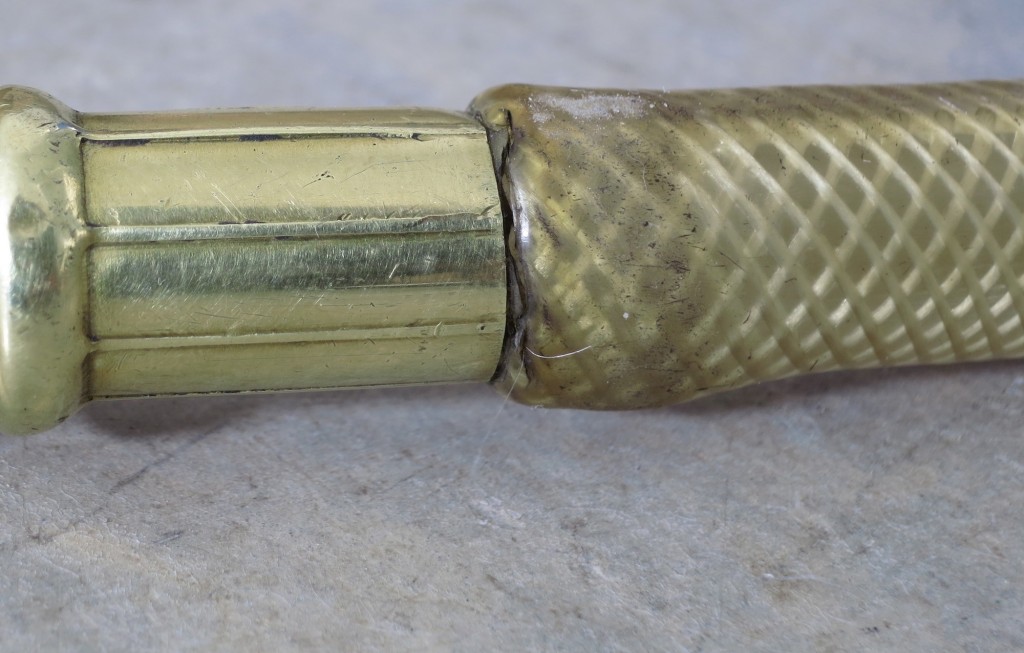
My compressor hose had been failing at the end for years, and finally split and started leaking when bent. The old 3/8″ hose was Made-in-USA (surprisingly), and at 100-feet long was longer than I need in my garage. My compressor is on wheels and can be moved, but 50-feet is a better length for most projects.
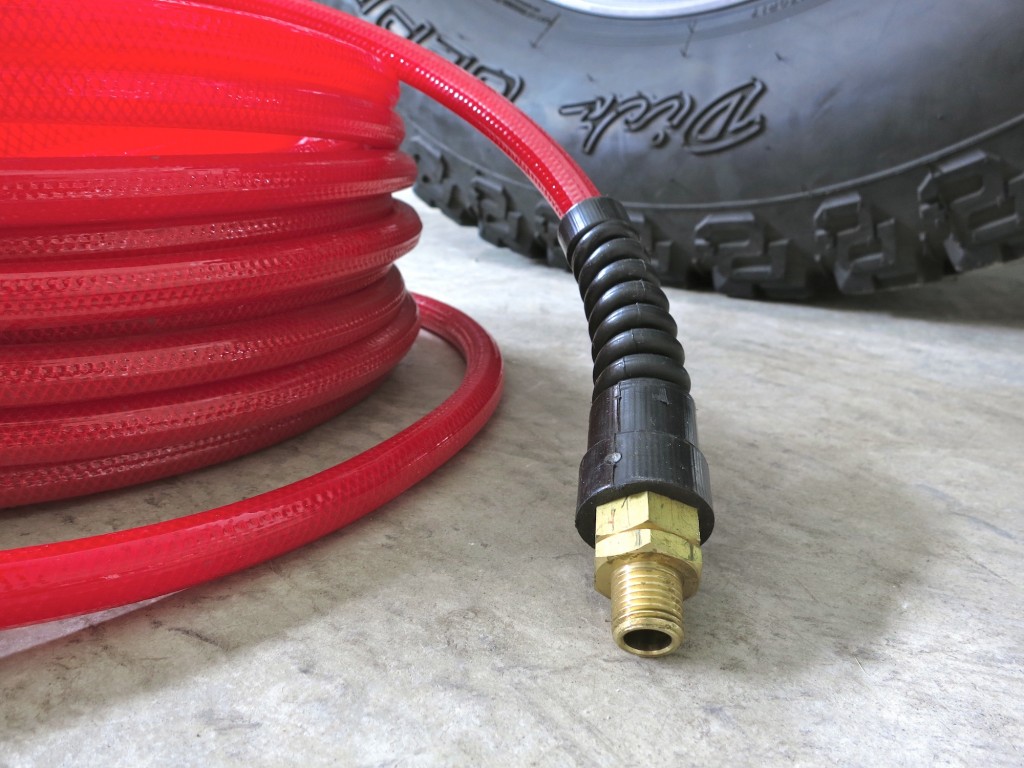
There were a few hose options, one much more heavy-duty (and heavy) than I wanted, and probably not needed for my home shop. I decided on this 3/8″ x 50′ lightweight, kink & tangle resistant, polyurethane-reinforced AirPro product, marked “Made in the USA” and “Patent Pending”. Made by Contractor’s Choice which is based in Eugene, Oregon. I could have chosen blue, but of course I picked the red line for $37.00.
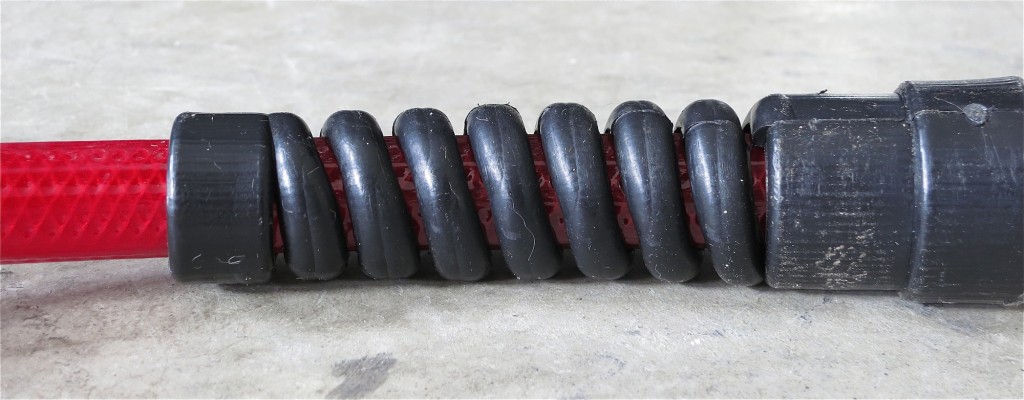
Our climate is dry, though I should still drain the moisture from the bottom of my compressor more often, but I took this opportunity to open the petcock. There was a surprising amount of water inside, though there was very little rust. Reading the instructions on the back of the packaging I was surprised to learn there was a break-in procedure to follow: Uncoil and straighten the hose to full length, attach an air nozzle or tool, charge with air to recommended working pressure, pull straight to remove any twists, and allow to sit under pressure for 30-minutes. The instructions also state to store the hose in loops, not to chain braid or coil into figure eights.
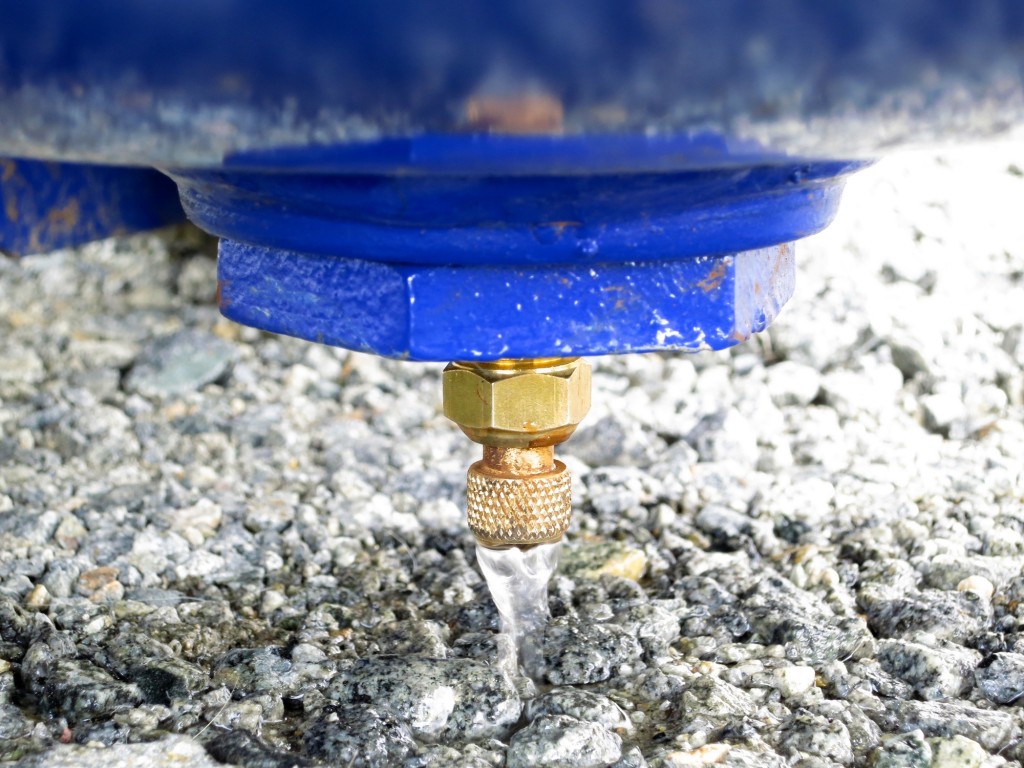
After two days the tank has lost very little pressure while sitting fully charged, a nice upgrade. Should I swap some tires and wheels?
Copyright © 2012 James Langan
Though I know little about the technology, I’ve long been intrigued by the possibilities with solar power. I’m not a fan of huge solar sites across our western deserts on public lands, but I do like the idea of solar panels on the roof of my house. We looked into adding solar during the construction of our home several years ago, but the cost vs. benefit wasn’t affordable at the time.
Even more interesting are solar, glass highways! I’m not sure how practical this is, but it sounds and looks great in the video. After a little web searching it seems that solar panels at the side of a freeway, not actually part of the road, is as far as the idea has progressed. Just like in my personal solar example, it seems the hurdle remains the price tag, not desire or feasibility.
This link tells the Oregon story well. (Click)
Copyright © 2012 James Langan
In the broad sense of the expression I’m a car guy. Though it’s much more accurate to say I’m a truck guy, or a motorcycle guy, as these machines have been the focus of my enthusiasm since my youth. But cars have their place, particularly when it comes to running errands, driving on-pavement, and hauling only people or small parcels. We have a car for these tasks, my wife’s 2000 Golf TDI.
The 1.9L TDI sips so few liters of diesel that I usually don’t drive it with a focus on fuel economy. This contrasts with how I typically drive my 4WDs, trying to squeeze all I can out of each gallon of fuel. The daily driving commuter fuel economy from the TDI is very close to 40 MPG. Sometimes a bit less, sometimes more, depending on the driving mix. Most car highway trips you will find us driving the TDI, and the fuel economy while driving 75+/– is usually around 45 MPG, depending on how many in-town miles we traveled and how hard I flog the little oil-burner.
This past weekend we took a short drive to enjoy a favorite restaurant in a nearby city. I decided we would also do a “mileage test”, the term is part of my vernacular. The trip included several miles of 65 MPH freeway, but most of the 78.4 miles were on rural highways with only a few stoplights and a 55 MPH speed limit. I accelerated moderately, drove the speed limit, and paid attention to the task at hand, driving, but there was no hypermiling silliness. We drove very few in-town miles. We returned to the same fuel pump, set it to the same setting, no topping off, etc. Our consumption was 1.392 gallons.
Copyright © 2012 James Langan